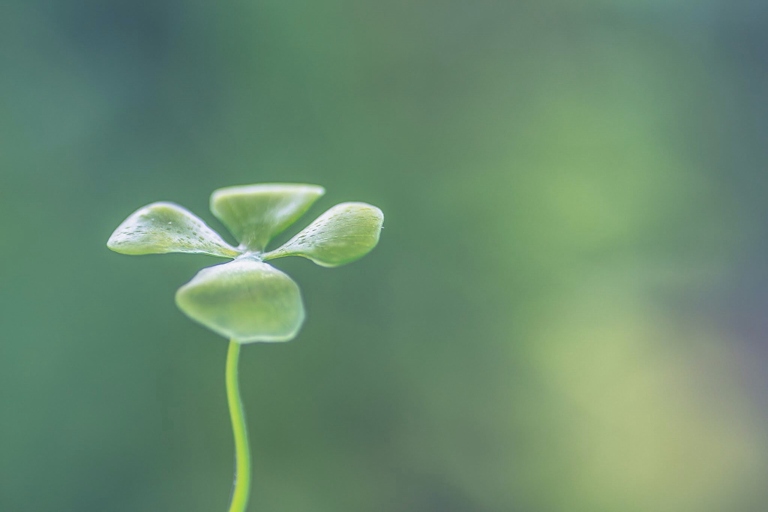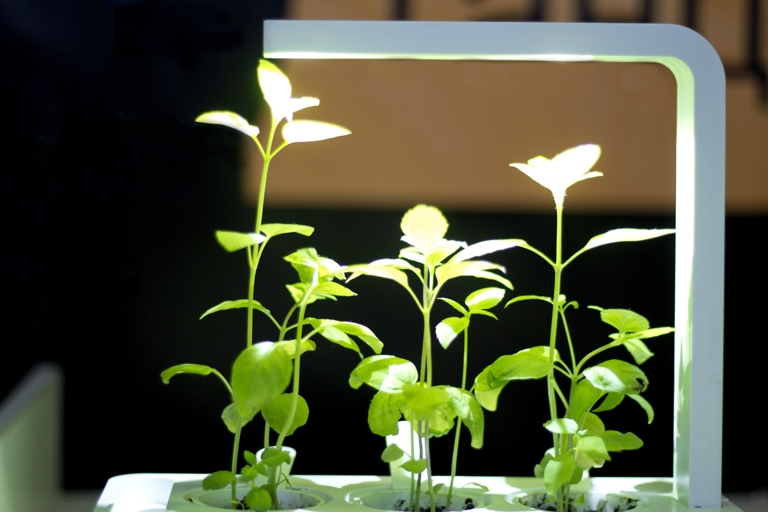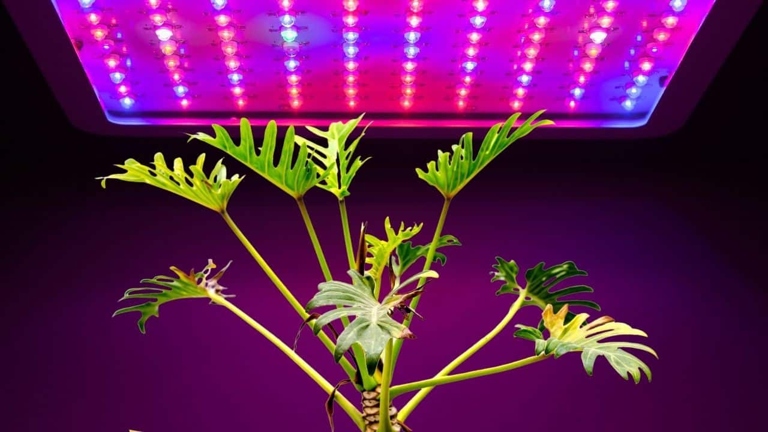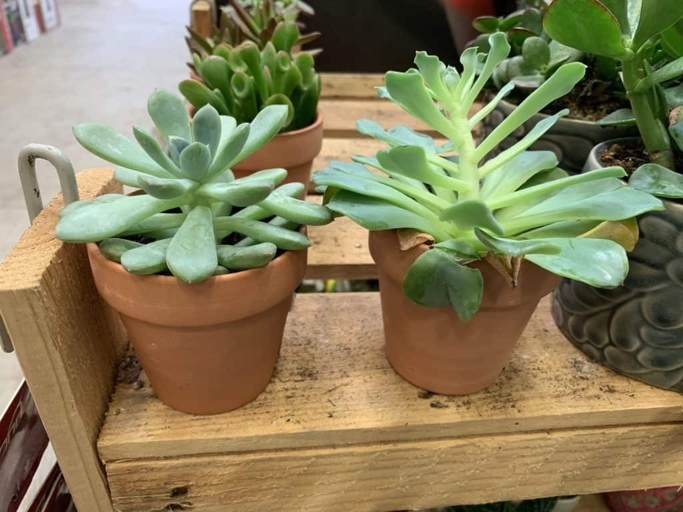In this article, we will explore the question of whether or not plants can use artificial light for photosynthesis. We will look at the different types of light that plants need for photosynthesis and how artificial light can provide these. We will also consider the benefits and drawbacks of using artificial light for photosynthesis.
Importance of Light for Plants
They use light for photosynthesis, which helps them make food. Without light, plants would die. Plants need light to grow.

Sunlight is full of different colors of light, and it helps plants grow big and strong. There are many different types of light, but plants need sunlight to grow the best.
Some plants can grow in artificial light, but they don’t grow as well as they do in sunlight. If you want your plants to grow the best, give them sunlight.
When You Can Use LED Lamps?
Plants need light to grow, but they don’t necessarily need sunlight. Many plants can grow just fine under artificial light, including LED lamps.
So when can you use LED lamps for your plants? If you have a plant that needs more light, you can use an LED lamp with a higher wattage. Generally, LED lamps are best for plants that don’t need a lot of light, such as succulents and cacti.

And since LED lamps don’t produce a lot of heat, they can be placed closer to plants without harming them. LED lamps are also a good option for plants that need a specific kind of light, such as blue light for blooming plants.
So if you’re looking for a low-light plant or a plant that needs a specific kind of light, an LED lamp may be the way to go.
Do Plants Grow Better Under Artificial Light or Sunlight?
Artificial light can be used to supplement sunlight, or it can be used as the sole source of light for plants. Plants need sunlight to grow, but they can also use artificial light.
Fluorescent lights are often used for indoor plants because they emit little heat and are relatively inexpensive. There are many different types of artificial light, and each has its own advantages and disadvantages for plant growth. However, they can cause plants to grow tall and spindly.
LED lights are becoming increasingly popular for growing plants because they are very efficient and emit very little heat. They are more expensive than fluorescent lights, but they last longer and can be tailored to specific plant needs.

Plants can also be grown under full-spectrum LED lights, which mimic sunlight. These lights are more expensive than other types of artificial light, but they can help plants grow more evenly and produce more flowers and fruits.
Symptoms of Insufficient Lights for Plants
Here are some common symptoms of insufficient light for plants: In fact, too little light can be just as harmful as too much. When it comes to plants and artificial light, more is not always better.
Slow growth: If your plants are growing slower than usual, it could be a sign that they’re not getting enough light. 1.

Pale leaves: Another common symptom of insufficient light is pale or yellow leaves. This is because the leaves are not able to produce enough chlorophyll, which is necessary for photosynthesis. 2.
Leggy stems: If your plants have long, spindly stems, it’s another sign that they’re not getting enough light. 3. This is because the stems are stretching out in an attempt to reach more light.
4. Flowering problems: If your plants are having trouble flowering, it could be due to insufficient light. This is because the plants need light in order to produce the energy necessary for flowering.
This can be done by moving them closer to a window or by adding additional artificial light sources. If you notice any of these symptoms in your plants, it’s a good idea to increase the amount of light they’re getting.
Ideal lighting conditions for indoor plants
Different wavelengths of light can help plants in different ways. Plants need light to grow, but not all light is equal. For example, blue light helps plants grow compact and bushy, while red light helps them grow tall and spindly.
So, what are the ideal lighting conditions for indoor plants?
First, plants need a good balance of different wavelengths of light. They need some blue light for compact growth, some red light for tall growth, and some green and yellow light for healthy leaves.

They need at least six hours of direct sunlight per day, and even more if they’re growing in a shady spot. Second, plants need a lot of light.
Third, plants need light that’s not too intense. Bright, direct sunlight can actually damage leaves, so it’s best to give plants a little bit of shade during the hottest part of the day.
With these three things in mind, you can create the ideal lighting conditions for your indoor plants, no matter what type of plants you’re growing.
Types of Grow Lights for Indoor Plants
The most common type is fluorescent lighting, which is inexpensive and easy to find. There are a few different types of grow lights that can be used for indoor plants. However, these lights don’t provide the full spectrum of light that plants need for photosynthesis.

LED grow lights are becoming more popular because they are more energy-efficient and provide a full spectrum of light. However, they can be more expensive than fluorescent lights.
High-pressure sodium lights are another option for indoor plants. However, they can also be very expensive. These lights provide a very intense light, which can be beneficial for some plants.
Incandescent Lamps
Incandescent lamps are the original type of light bulb, and they are still in use today. These lamps work by passing an electric current through a wire filament, which heats the filament and produces light.

This makes them less popular than other types of light bulbs, such as LED bulbs. Incandescent lamps are not very efficient, however, because much of the energy used to power them is lost as heat.
For these reasons, they are still widely used in homes and businesses. They are relatively inexpensive to produce, and they emit a warm, natural-looking light. Despite their inefficiency, incandescent lamps have a few advantages.
Fluorescent Lamps
Fluorescent lamps are a type of artificial light that can be used for photosynthesis. Plants that are grown under fluorescent lamps typically have a higher rate of photosynthesis than plants that are grown under other types of light. Fluorescent lamps emit a broad spectrum of light, which is beneficial for plant growth.
Energy Saving
In fact, many plants grow just fine under artificial light, like the kind you find in your home. Plants need light to grow, but they don’t need sunlight.

It’ll save you money on your energy bill, and your plants will be just as happy. So, if you’re looking to save some energy, why not give your plants a little light from a lamp instead of cranking up the sun?
Sodium Lamp
Sodium lamps emit a yellow-orange light that is rich in the wavelength needed for photosynthesis. A sodium lamp is a type of artificial light that can be used for photosynthesis. This type of light is also very efficient, meaning that it uses less energy than other types of artificial light.
LED Lamp
But can plants use LED light for photosynthesis? They use less electricity than traditional incandescent bulbs and last longer, too. LEDs, or light-emitting diodes, are a type of energy-efficient lighting.

In fact, LEDs are a great option for indoor plants because they emit very little heat. This means that you can put your plants closer to the light source without worrying about them getting too hot. Yes, plants can use LED light for photosynthesis.
LEDs also emit a full spectrum of light, which is ideal for plant growth. And because they are so energy-efficient, you can run them for long periods of time without worrying about your electricity bill.
So if you’re looking for a way to help your plants grow, consider using LED light. Your plants will thank you!
Frequently Asked Questions
1. What is photosynthesis?
Photosynthesis is the process that produces organic matter from simple inorganic molecules from the sun’s energy.
2. How does photosynthesis work?
Photosynthesis occurs when light energy is converted into organic matter, such as glucose. The process of photosynthesis is used to produce food for plants.
3. What are the benefits of photosynthesis?
Photosynthesis is important because it produces the food that plants need to survive. Additionally, photosynthesis produces oxygen gas, which is necessary for humans and other animals to breathe.
4. Can plants use artificial light for photosynthesis?
Yes, plants can use artificial light for photosynthesis. However, artificial light is not as effective as sunlight.
5. How do plants use artificial light for photosynthesis?
When artificial light is used for photosynthesis, plants convert the light into chemical energy. This chemical energy is then used to produce glucose from carbon dioxide and water.
6. What are the benefits of using artificial light for photosynthesis?
Artificial light can be used to supplement sunlight, which can be beneficial for plants that do not receive enough sunlight. Additionally, artificial light can be used to grow plants indoors.
7. Are there any drawbacks to using artificial light for photosynthesis?
Yes, there are some drawbacks to using artificial light for photosynthesis. Artificial light is not as effective as sunlight, so plants may not produce as much glucose. Additionally, artificial light can be expensive.
8. How can I use artificial light for photosynthesis?
If you want to use artificial light for photosynthesis, you will need to purchase a grow light. Grow lights come in a variety of shapes, sizes, and colors.
9. What are the different types of grow lights?
The two most common types of grow lights are fluorescent and LED. Fluorescent grow lights are less expensive, but they are not as energy-efficient as LED grow lights.
10. How do I choose a grow light?
When choosing a grow light, you will need to consider the type of light, the intensity of the light, and the price. You will also need to decide whether you want a grow light with a timer.
Final thoughts
Yes, plants can use artificial light for photosynthesis. However, they will not be able to grow as large or as quickly as they would if they were in natural sunlight. The light from artificial sources is not as intense as the light from the sun, so it takes longer for plants to produce the same amount of food.
